 On President’s Day, we honor two great men who have led this country through its creation and one of its most trying times – namely George Washington and Abraham Lincoln respectively. And while feature films and mini-series have celebrated our former presidents, it is the First Ladies who have served as caregivers that I honor today.
On President’s Day, we honor two great men who have led this country through its creation and one of its most trying times – namely George Washington and Abraham Lincoln respectively. And while feature films and mini-series have celebrated our former presidents, it is the First Ladies who have served as caregivers that I honor today.
Hillary Clinton, Nancy Reagan, Barbara and Laura Bush and the caregiving pioneer, Rosalynn Carter, are passionate advocates for our nation’s 65 million caregivers because they have taken the caregiving journey themselves. And, Michelle Obama showed the nation how to manage a multi-generational household when her mother moved into the White House to help the former First Lady with rearing daughters, Malia and Sasha.
When current First Lady Melania Trump takes up residence in the White House next month, she may not be caring for her older parents or other relatives but she has pledged to support women’s issues and there is no bigger issue for women today than the juggling act of caring for an older parent. And, First Daughter, Ivanka Trump Kushner, has been instrumental in pushing her father, President Donald Trump, into adopting an expanded family leave act for working caregivers of children and older parents.
Rosalynn Carter – The First Caregiver Pioneer
Long recognized as one of the pioneers of the caregiving movement, Rosalynn Carter is known for her famous description of the life event of caregiving in America:
You have been a caregiver
You are a caregiver
You will be a caregiver
Or someone will be caring for you
In her book, Helping Yourself Help Others – A Book for Caregivers, former First Lady Rosalynn Carter writes, “We can learn to approach caregiving as a blessing as well as a challenging task.”
She knows of what she speaks firsthand: Rosalynn was only 12 years old when her father was diagnosed with terminal leukemia. As the eldest daughter, she helped care for her ailing father and supported her mother by also caring for her younger siblings. She took up caregiving again for several relatives with cancer after she left the White House and most recently was caregiver for her mother who died in 2000 at age 94.
Rosalynn’s gift to caregivers comes from a lifetime of understanding the challenges – emotional, physical and financial – that accompany caring for a loved one. She was the first to hold a caregiver conference that identified “burn-out” that is so often a side effect of caregiving. She is also a long-time devoted and determined advocate for those Americans with mental health issues. It was the recognition of a national center to focus on the future caregiving issues facing America that led Rosalynn Carter to create the Rosalynn Carter Institute (RCI) for Caregiving at Georgia Southwestern State University in Americus, Georgia.
The mission of the RCI is to establish local, state and national partnerships with organizations focused on quality, long-term home and community based services to help caregivers. The RCI activities include a variety of advocacy, academic, and awards and scholarship programs. While many of the caregiver programs are Georgia-based, these programs are examples that help serve as models for nationwide caregiver support, education and training.
Nancy Reagan – The Legacy of Alzheimer’s and the Long Good-bye
When Nancy Reagan passed away last year, she left a legacy of advocacy for the disease that took her beloved “Ronnie”: Alzheimer’s. Nancy and Ronald Reagan’s touching affection for each other was evident in the letter former President Reagan wrote to tell the world he was suffering from this neurodegenerative disease that afflicts 5 million Americans today. In the letter, President Reagan not only helped shine his celebrity spotlight on a disease many Americans did not understand, but he also highlighted the concern he had for Nancy who would be caring for him. He understood the difficult emotional toll it would take on his wife and as the disease progressed, and the last 10 years of his life he did not even recognize her.
Today more than 15 million Americans are doing what Nancy did – caring for loved ones with Alzheimer’s – and suffering the emotional toll of caregiving for a loved one with dementia known as the long good-bye. While Nancy had the resources to care for her husband in ways most Americans do not, the emotional toll it took on her cannot be ignored.
What was perhaps most heartwarming was that the strained relationship Nancy had with her stepchildren and with her own son and daughter, actually improved over the course of President Reagan’s disease diagnosis and decline. Family dynamics are sometimes difficult to navigate during caregiving and can lead to added stress and strife. But, in this instance, it brought a family closer together which is one of the gifts that can come from caregiving.
After President Reagan’s passing in 2004, Nancy became one of the most passionate advocates for Alzheimer’s disease awareness and education and especially lending her voice and support for the research around embryonic stem cells that can hopefully lead to a cure.
Barbara Bush – Caregiver for a Chronically Ill Child and an Aging Husband
At this year’s Super Bowl, one of the most poignant images was Barbara Bush pushing her husband, wheelchair-bound President George Herbert Walker Bush (known as “41”) onto the field for the coin toss.
At age 91 for Barbara and 92 for George (who is the oldest living former President), it was only days earlier that both had been hospitalized (he with pneumonia and she with bronchitis). But football in Texas is serious business and it would take more than illness and age to keep the Bushes from participating in an American tradition. And, while both have had illnesses over the years, it is Barbara who has stepped up to care for her husband over the last several years even though he was determined to be a vital senior, skydiving on his 80th, 85th and 90th birthdays.
However, in 2012, Barbara Bush was called into service as caregiver George when he was hospitalized with bronchitis and his fever had spiked. As a spousal caregiver, Barbara joins more than 3 million other spouses who are caring for their husband or wife, and the one in three caregivers who are over age 65 when the become a caregiver. And the stress of having a spouse in declining health can accelerate the stress caregivers feel.
We often witness the stress of the presidency – look at all presidents during the campaign and then after they leave office where their white or gray hair betrays the emotional burdens they have lived through. It is fact that the stress of being president prematurely age the men who have held office. But it was Barbara who suffered incredible stress and depression and subsequent “white” hair after caring for her ill child and then experiencing the premature death of her four-year-old daughter Robin to leukemia in 1953 when Barbara was only 28 years old.
Hillary Clinton – Caregiving Daughter and Champion
In 2011, Hillary Clinton lost her 92-year-old mother, Dorothy Rodham. While the details of her mother’s passing and possible illness were kept private from the invasive world of 24/7 news media, Clinton has been a long-time advocate of the nation’s caregivers when she was a senator from New York. She supported several pieces of proposed legislation that offered more services to support those family mebers who are providing 80 percent of the long-term care to keep a loved one living at home as long as possible.
In an interview from Clinton’s campaign days for the Democratic presidential nomination, she credited her mother with giving her the tools — and toughness — to enter politics. In the end, her mother had also given her daughter the tools to be a compassionate caregiver.
Laura Bush – Sandwich Generation Caregiver
Laura Bush, an only child who grew up in the oil town of Midland, Texas, played caregiver to both her mother and her father. While campaigning with her husband George “W” Bush who was running for governor of Texas, her father was diagnosed with Alzheimer’s disease. While Laura, who was raising twin daughters, Jenna and Barbara, played back-up to her mother who was primary caregiver, she poignantly wrote in The Shriver Report: A Woman’s Nation Takes on Alzheimer’s about the impact to families when Alzheimer’s disease happens.
“What my mother noticed first was that my father could no longer fill out bank deposit slips. He would stare at the lines on the forms, a look of confusion washing over his face. So Mother began to make the deposits for him. We never got a diagnosis of Alzheimer’s or a specific form of cognitive failing. But we saw his mind erode. Once, he asked our daughter Barbara to get him some ‘B & Bs.’ He meant M&Ms, but he kept saying ‘B & Bs.’ In her 10-year-old way, she understood him and came out of the grocery store with the brown bag of the bright candy just the same.”
Laura stepped in again to care for her mother, Jenna Welch, who was diagnosed with and survived breast cancer when she was 78. Laura’s support of Susan G. Komen for the Cause and her activism on behalf of women’s risk of heart disease has led her to play a leading role in women’s and caregiver health issues. She was an ambassador for The Heart Truth campaign created by the National Heart, Lung and Blood Institute and dedicated the inaugural display of the First Ladies Red Dress Collection at the John F. Kennedy for the Performing Arts in 2005.
First Lady, First Daughter – Sandwich Generation Champion and Made the White House a Multigenerational Household
Former First Lady Michelle Obama joined the ranks of caregiver growing up as the daughter of a father with multiple sclerosis. Her experience in helping to care for a father with an autoimmune disease currently affecting more than 400,000 people in the U.S. – with 200 more people diagnosed every week – gave her early insights to the impact of caregiving on families. Michelle has been a true champion of the Sandwich Generation – those caregivers squeezed between caring for two generations – children and older parents.
Michelle also turned the White House into a multigenerational household when her husband held office. She invited her mother, Marian Shields Robinson, to come live in the White House to help care for her daughters, Malia and Sasha, who were only 10 and seven respectively. Dubbed the “First Granny,” Robinson was the first live-in grandmother in the White House since Elivera M. Doud, the mother of Mamie Eisenhower, during the Eisenhower administration in the 1950s. Recently, Pew Research reported that one in five Americans – approximately 60 million – live in multigenerational households.
While women may be seen as “the power behind the throne,” these First Ladies are proof that women also put the heart into caregiving.
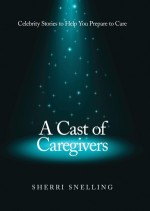 This is adapted from Sherri Snelling’s upcoming book, A Cast of Caregivers – Celebrity Stories to Help You Prepare to Care.
This is adapted from Sherri Snelling’s upcoming book, A Cast of Caregivers – Celebrity Stories to Help You Prepare to Care.
©2017 Sherri Snelling

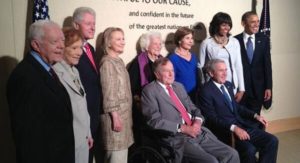
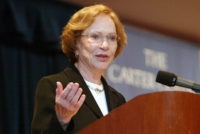
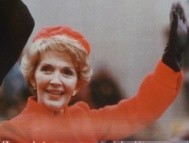
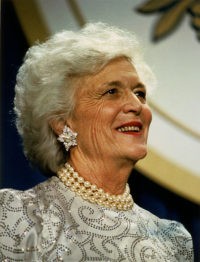
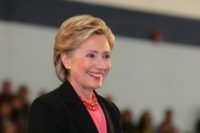
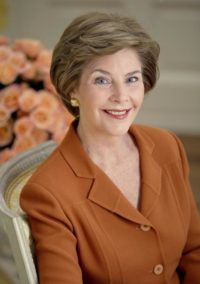
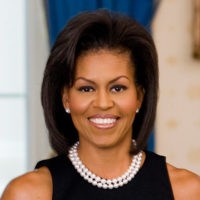
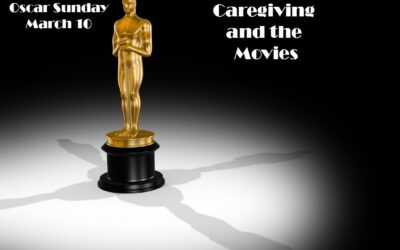

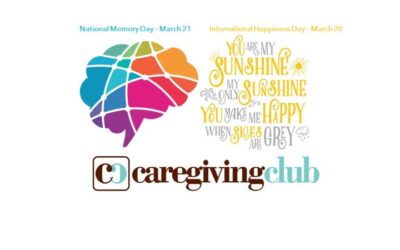
0 Comments
Trackbacks/Pingbacks